8. Job Search Strategies
Jamie Noakes
[This chapter is adapted from a previous version by Tara Bond]
Introduction
The job search process can feel overwhelming, but this chapter will guide you through it step by step. As job searching continues to evolve, staying informed about current trends and refining your approach will help you remain competitive in the job market. Many job seekers limit their search to online postings, yet effective job searching involves a diverse set of strategies to stand out and secure opportunities.
New trends in job searching include:
- The growing influence of AI-driven job matching tools, such as LinkedIn’s “Easy Apply,” which personalize job recommendations based on user profiles.
- The increasing significance of personal branding through social media and digital portfolios to attract employers (see the Social Shadow chapter)
- The rise of remote work opportunities and access to global job markets, allowing candidates to apply beyond geographical boundaries.
A successful job search begins with a structured plan that incorporates diverse job search strategies. These strategies help job seekers build meaningful connections, increase visibility among employers, secure interviews, and, ultimately, receive job offers.
Before diving into the job search, it is essential to assess your skills, values, and personal traits (see the Self-Assessment chapter). This self-reflection makes it easier to:
- Identify careers that align with your strengths and interests.
- Analyze job descriptions and understand employer expectations.
- Recognize key personal traits and skills that employers seek.
- Evaluate potential employers based on their mission, values, and culture.
- Determine which jobs align with your preferences and long-term goals.
- Pinpoint areas for skill development to enhance your qualifications.
Although job postings remain a primary job-seeking tool, they are not the primary method that employers use to hire candidates. A well-rounded job search strategy integrates multiple approaches, including networking and optimizing your online presence. Networking offers invaluable insights into industries, organizations, and career pathways. It can enhance your professional reputation and reveal hidden job opportunities that may not be publicly advertised.
This chapter explores the essential elements of an effective job search strategy through three key sections:
- Research
- Contact
- Decode
Learning Objectives
By the end of this chapters, you should be able to:
- Define and explain effective job search strategies.
- Develop a comprehensive job search plan that goes beyond traditional application methods.
- Create a job leads list and a structured job search action plan to stay organized.
- Identify best practices for arranging and conducting informational interviews.
- Analyze job postings effectively to extract key information and tailor your applications accordingly.
Job Search: Research
Understanding the Job Market: Visible & Hidden Opportunities
The job market can be divided into two categories: visible and hidden.
- The visible job market includes publicly posted job openings that anyone can access. These positions often attract high competition since they are easy to find.
- The hidden job market consists of opportunities that are not publicly advertised. These positions are typically discovered through networking and direct outreach to employers (Camosun College, 2021).
To access the hidden job market, job seekers must:
- Identify and research the companies they are interested in.
- Reach out to these companies to inquire about potential openings.
Many employment opportunities are never advertised, making it essential to use multiple job search strategies, including networking, to uncover these hidden roles. While applying for publicly posted positions is important, it should not be your sole strategy. Networking plays a key role in learning about opportunities that are not yet visible to the general public (Indeed Editorial Team, 2023).
The Role of Research in Job Hunting
Research is a crucial but often overlooked part of the job search process. It helps you:
- Identify specific jobs, organizations, and industries that align with your career goals.
- Tailor your personal marketing or branding to match those opportunities (see the Social Shadow chapter).
Start by brainstorming your personal network—people from various parts of your life who might assist with your job search.
Networking: Your Gateway to the Hidden Job Market
Networking is about building lasting, mutually beneficial relationships that can help you discover hidden opportunities and advance your career (University of British Columbia Student Services, n.d.). Many job leads come through networking, which often provides access to unadvertised roles. Networking can occur anywhere, not just at formal events. Daily interactions with classmates, professors, family, friends, and colleagues can create opportunities to connect with others in your field.
Networking helps you tap into insider knowledge and opportunities that are not widely available. To build an effective network, you need to maintain ongoing relationships and continually expand your connections.
Networking Examples
- Meeting with a friend for coffee to learn more about their job.
- Attending job fairs and trade shows to discover new companies.
- Joining industry associations and attending professional events.
- Conducting informational interviews with decision-makers in your field (see the Interviews chapter).
Building & Maintaining Your Network
Networking should not be limited to times when you are actively job searching. Instead, it should be a continuous effort. When networking:
- Share your career goals, and ask if your contacts can connect you with others in their network.
- Offer support in return to make the relationship mutually beneficial.
Steps to build your network:
- Brainstorm Your Connections: List the people you already know and trust (e.g., family, friends, professors, and colleagues).
- Engage With Your Network: Let them know you are job hunting, and explain your career interests.
- Ask for Introductions: Request referrals to people in their networks who can offer advice or opportunities.
The strength of your network depends on both the number of people you know and the quality of your relationships. Regularly adding new contacts—especially those who work at companies you are interested in—enhances your access to career opportunities. Take a few minutes to fill out the names of people you know and trust in each of the categories in Exercise 8.1.
Exercise 8.1
Current Network
Use the diagram in Figure 8.1 to record and organize the people in your existing network to whom you can reach out for advice and referrals.
This diagram is also available as a fillable PDF: Network Diagram Fillable PDF version
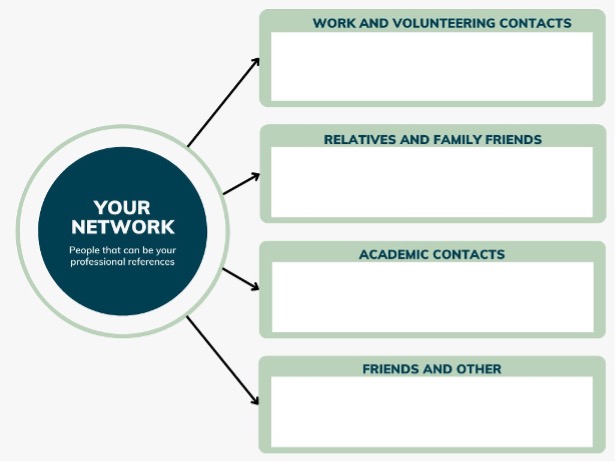
After brainstorming your network and doing some initial research, the next step is to organize your contacts. It is crucial to research companies and roles before attending job fairs or conducting informational interviews. Informational interviews work best as two-way conversations, not just opportunities to ask questions you could have answered on your own.
By researching beforehand, you show the interviewee that you are serious and prepared. This allows you to ask insightful, specific questions and engage in meaningful dialogue. In turn, your research will deepen your understanding of industries, companies, and roles, helping you focus your job search more effectively.
Researching Jobs, Organizations & Industries
Job seekers should gather information about specific roles, companies, and industries to tailor their applications and job search strategies. Key areas to research include:
- Company culture, mission, and values
- Skills and experience valued by the company
- Recent news and events about the company
This research helps you verify that a company aligns with your career goals and enables you to tailor your resume, cover letter, and networking approach. The information you collect can also form the foundation of a job leads list, guiding your search efforts.
Resources for Job & Industry Research
Before engaging in activities like informational interviews, use a variety of resources to build your knowledge, such as:
- Online Job Boards: Platforms like Indeed, Glassdoor, and LinkedIn.
- Company Websites: Career pages, press releases, and corporate information.
- Trade and Professional Associations: Industry-specific reports and events.
- Social Media: Company LinkedIn pages, Twitter accounts, and other platforms.
- University Career Services: Resources like the TRU Career and Experiential Learning (n.d.a) Department.
Research is a crucial step that strengthens your understanding of industries and companies, allowing you to make informed choices and stand out in the job market.
Modern Job Search Techniques
Use the latest tools to stay ahead in your job search:
- AI-Powered Job Alerts: Platforms like LinkedIn, Glassdoor, and Indeed offer customized job alerts based on your skills and preferences.
- Google Alerts: Receive regular updates on industry trends, company news, and relevant job postings.
- Company Deep Dives: Track companies of interest by following their websites, press releases, and LinkedIn profiles to stay informed about hiring trends and developments.
- Personal Branding: Optimize your LinkedIn profile with industry-relevant keywords, a professional summary, and a portfolio that highlights your accomplishments.
By leveraging these tools and conducting thorough research, you can enhance your job search and increase your chances of finding the right opportunity.
Job Search Action Plan
Once you complete your research and organize your network, your next impulse may be to surf the web for job advertisements. However, your job search will be more effective if you first create a structured action plan. Developing a schedule helps you stay on track and consistently take steps toward your job search goals.
Consider committing to the following activities:
- Take self-assessments to identify your skills, interests, and values (see the Self-Assessment chapter).
- Prepare your resume (see the Application Documents chapter).
- Reach out to your networking contacts.
- Set up informational interviews.
- Research potential employers.
- Attend job fairs and trade shows.
Creating a clear plan with specific goals, tasks, and timelines is key. Tables 8.1, 8.2, and 8.3 below provide a sample job search action plan with three primary goals. Each goal includes tasks, the estimated time to complete each step, and target completion dates.
Tracking Your Applications
Since you will likely apply to multiple positions over a short period, maintaining a job search log (Table 8.4) is crucial. This log allows you to track job applications and follow-up activities, including phone calls, emails, and meetings with employers.
For ongoing updates about job opportunities, companies, and industries, set up Google Alerts (Google Search Help, n.d.) for relevant keywords. Google will notify you with search results either daily or weekly. Conducting regular, in-depth research is essential for refining your job search strategy and preparing for informational interviews.
Exercise 8.2
Research
Once you complete your research and organize your network, your next step should be to create a structured job search plan. Begin creating your job leads list and job search action plan:
- Identify and record sources of job leads, including networking contacts, friends, and family.
- Create a sample job search action plan.
- Conduct research on at least one company for which you are interested in working.
Best Practices for Job Search Time Management
- Dedicate 1-2 hours per day to searching and applying.
- Allocate 30 minutes per day to networking and follow-ups.
- Use a spreadsheet or job tracking tool (e.g., TealHQ or Huntr) to track applications.
- Set weekly goals (e.g., apply to five positions or reach out to three new contacts).
Expanding Your Job Search
- Leverage recruiters and staffing agencies.
- Explore freelancing or gig work to build experience.
- Consider international job postings in remote-friendly companies.
Job Search: Contact
Research plays a crucial role in advancing your job search, particularly through networking and informational interviews. By connecting with employers via personal or professional networks, job seekers can uncover opportunities, gather career insights, and build meaningful relationships. Your connections—whether they are friends, family, professors, employers, or peers—are invaluable resources. It is essential to appreciate these relationships and continually expand your network, especially in your field of interest.
This section covers two key networking methods:
- Networking through job fairs, trade shows, and industry associations.
- Networking through informational interviews.
Previously, you identified your personal network in Exercise 8.1 and created a job leads list and job search action plan in Exercise 8.2. You also researched a company of interest. Now, it is time to broaden your network by engaging with job fairs, trade shows, and professional associations, particularly through informational interviews.
Networking Through Job Fairs, Trade Shows & Industry Associations
Attending job fairs, trade shows, and industry events offers direct opportunities to network, arrange informational interviews, and collect valuable contact information. Professors and the Career & Experiential Learning (CEL) team at Thompson Rivers University (TRU) can guide you to networking events, job openings, internships, and research opportunities.
You can discover networking events through community calendars, newspapers, professional journals, and organizational websites, including those of TRU. These events help you market yourself and learn about companies that may be hiring for roles that match your career interests.
The video below offers practical advice on making the most of job fairs.
Job Fair do’s & don’ts [1:43 min] by Thompson Rivers University (2019)
If you are using a printed copy, you can scan the QR code with your digital device to go directly to the video: Job Fair do’s & don’ts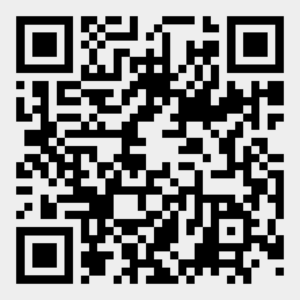
Preparation Tips for Job Fairs & Trade Shows
- Research: Learn about the participating companies ahead of time to demonstrate your knowledge.
- Resume: Ensure your resume is updated, printed on quality paper, and tailored to the companies you want to approach.
- Availability: Know when you are available to start work if you are seeking a job.
- Target List: Prioritize the companies you want to meet to manage your time effectively.
- Know Your Strengths: Be clear about the skills and qualifications you bring to the table.
- Anticipate Questions: Prepare answers to potential questions from employers.
- Plan Questions: Have a list of thoughtful questions for the recruiters.
- Portfolio: Bring a portfolio to organize your materials, including extra resumes, pens, and paper for note-taking.
- Professional Presentation: Dress in business attire and practice your self-introduction. Make a strong first impression by maintaining eye contact, offering a firm handshake, and acting professionally.
During Job Fairs & Trade Shows
- Display enthusiasm, confidence, and professionalism.
- Introduce yourself with your name, major, and graduation date.
- Present your resume to the recruiter.
- Demonstrate your knowledge of the organization.
- Summarize your key experiences and skills.
- Ask about the application process and job opportunities.
- Request a business card, and follow up with a thank-you email afterward.
- Stay attentive to what representatives share, and be considerate of others waiting to speak.
- Keep an open mind about opportunities from all organizations.
- Avoid asking about salary or benefits until the employer shows a clear interest in you.
After the event, follow up with the contacts you made. Send a brief email to thank them, mentioning key takeaways from your conversation and expressing enthusiasm for their company.
TRU Career & Experiential Learning Job Fair
TRU’s Career & Experiential Learning Department hosts the largest job fair in BC’s Interior, featuring around 90 employer booths and over 2,000+ student attendees annually. Employers recruit students and graduates from various disciplines—arts, business, education, fine arts, health, journalism, science, social work, tourism, and trades—for roles ranging from volunteer work to graduate jobs. Attending TRU’s Job Fair (TRU Career & Experiential Learning, n.d.b), whether you are a first-year or final-year student, is a valuable way to develop networking skills and explore career opportunities.
The video below highlights moments from a past TRU job fair.
TRU Job Fair – Thompson Rivers University [0:59 min] by Thompson Rivers University (2015)
If you are using a printed copy, you can scan the QR code with your digital device to go directly to the video: TRU Job Fair – Thompson Rivers University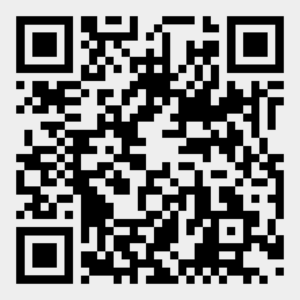
Additional Networking Through Industry Associations
Joining professional associations allows you to connect with influential people at meetings and events. Research organizations related to your field to explore membership benefits, including student discounts. Membership often grants access to directories and resources that can further expand your network.
Networking Through Informational Interviewing
Informational interviews are designed to:
- Explore specific career fields.
- Uncover or refine career options.
- Get advice on how your skills apply to the field.
- Learn about key issues in the industry.
- Expand your professional network.
Networking through informational interviews begins by identifying your current contacts and understanding how they can help you reach potential employers or advisors.
Opportunities to Network
Events such as job fairs, trade shows, and industry association meetings offer valuable chances to meet professionals in your field (Ryerson Career & Co-op Centre, 2018). Conversations at these events can naturally lead to opportunities to request informational interviews.
How to Approach an Informational Interview
When you reach out to someone for an informational interview, etiquette matters. You can contact them by email, phone, or in person, but regardless of how you reach out, be concise and professional. Here is how to craft a compelling request:
- Introduce Yourself: Share your name and a brief background.
- Explain the Connection: Mention how you found them or who referred you.
- Be Clear About Your Goal: State that you are seeking information about their role or industry.
- Specify Time Expectations: Let them know how long the meeting will take (e.g., 20–30 minutes).
The more respectful and prepared you are, the more likely they will agree to meet with you.
Preparing Your Questions
Come prepared with thoughtful questions to demonstrate your interest and gather useful insights. Informational interviews are an opportunity to ask questions you might not feel comfortable raising in a formal job interview, such as those about work culture, career progression, and even salary. Below are common question categories:
- Job Specifics: What does a typical day look like?
- Industry Trends: What are the current challenges and opportunities?
- Education and Skills: What qualifications and personal qualities lead to success?
- Career Growth: What advice would they give to someone starting in the field?
- Company Culture: What makes this organization unique?
Questions can be based on (Florida State University Career Center, 2018):
- Work environment
- Required prerequisites or education
- Occupation and company information
- Personal qualities suited for this occupation and company job search
- Career-building advice
- Closing questions
Bringing an updated resume (see the Application Documents chapter) can also be beneficial. Ask open-ended questions, such as the questions categorized and listed below.
If you are using a printed copy, you can scan the QR code with your digital device to go directly to Preparing Your Questions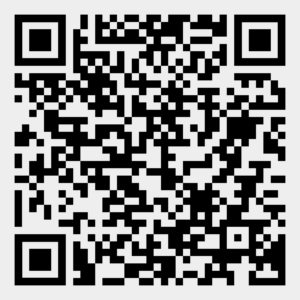
At the end of the informational interview, verbally thank the interviewee for taking the time to offer advice and career information. Ask the interviewee for referrals to other individuals for additional informational interviews. A follow-up handwritten thank you card, or an email update and/or words of thanks is appropriate. Record information you have obtained from your informational interview, including names, comments and new referrals for future reference, in your job leads list and job search action plan, which you started in Exercise 8.2.
During & After the Interview
At the end of the interview, thank your contact for their time and insights. You can also ask for referrals to other professionals who might be open to an informational interview.
Follow-up is essential:
- Document Your Experience: Write down what you learned, key takeaways, and any referrals you received.
- Send a Thank-You Note: Within 1–2 days, send a thank-you email or handwritten card expressing your appreciation (see examples in Thank You and Follow-Up Letter Example).
- Stay Connected: Keep the person updated on your progress, especially if you act on their advice or meet with someone they referred.
- Explore Suggested Opportunities: If you cannot afford to attend an event they mentioned, look into volunteering as a way to participate.
Building a strong professional network is an ongoing process. It is not just about quantity—quality connections with people who can offer advice and opportunities are invaluable. Networking regularly helps you hear about unadvertised roles and develop long-term relationships that support your career growth.
Thank You & Follow-Up Letter Example
If you are using a printed copy, you can scan the QR code with your digital device to go directly to Thank You & Follow-Up Letter Example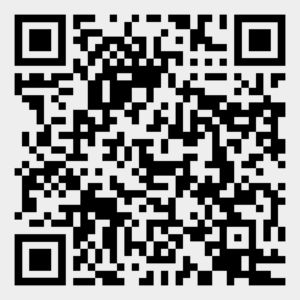
[Adapted from “Informational Interview: Thank-You Letter With Tips” (Doyle, 2019)]
Exercise 8.3
Preparing for Informational Interviews
To prepare for your informational interviews and build contacts:
- Research and record the dates of TRU’s Job Fair and any industry-specific trade shows that are offered locally.
- Record five questions that you can use in your informational interview, based on your research to date.
- Do you have some ideas for people you can interview now? Try to practice with family and friends before your first informational interview.
If you are using a printed copy, you can scan the QR code with your digital device to go directly to Exercise 8.3 Preparing for Informational Interviews
Job Search: Decode
Job postings typically follow a consistent structure. By analyzing job descriptions carefully, you can streamline your job search by focusing on roles aligned with your goals, writing compelling applications, and preparing confidently for interviews.
Although section names may vary, most job postings are divided into:
- Job title (and sometimes a job number)
- Company and role description
- List of key responsibilities
- Desired qualifications for applicants
As a rule of thumb, the most critical details appear at the top of each section. If you meet four out of five of the listed qualifications, take that as a positive sign.
Job Title
The job title, sometimes accompanied by a job number, is vital for tailoring your resume, summary statements, and profiles (see the Application Documents chapter). Titles can vary significantly across companies in terms of responsibility level, required experience, and salary range. Some companies may use broad titles, while others are very specific. Decode the job description to gain clarity on these details. Always include the company’s job number when referring to the title.
Job Description
To extract key information from the job description, analyze or “decode” the text. Research the company through its website and other sources to understand its goals. This research can help you target positions and organizations that match your career aspirations.
Responsibilities
The responsibilities section outlines the tasks and duties expected in the role. Typically, job postings list five to 10 responsibilities. These may range from broad statements (e.g., “lead the team in generating…”) to detailed tasks (e.g., “create weekly reports…”). Use these details to customize your resume by highlighting relevant experiences, achievements, and skills. If you encounter unfamiliar responsibilities, research the terms online to understand them better. Do not let unfamiliar tasks deter you from applying if they seem learnable.
Qualifications
Also referred to as “requirements” or “experience,” the qualifications section highlights the desired skills, education, and background for applicants. Employers might specify prior experience (e.g., “experience in…”) or accomplishments they expect candidates to have. Clearly state how you meet these qualifications in your resume’s summary section. If you do not meet all the criteria, emphasize transferable skills and strengths that position you as a strong candidate (see the Application Documents chapter).
Understand the Jargon
Think of the job posting as a map to getting the position. Read the description several times, carefully, and be on the lookout for repeating themes.
For example, you may notice the qualifications lists “self-starters” or the responsibilities section specifies that the applicant will “independently develop a project.” These are good indications that the employer wants someone who is comfortable working without supervision and in a leadership role.
Analyzing job postings and tailoring your resume to match job titles, descriptions, responsibilities, and qualifications can determine whether you get an interview or are screened out. Keep in mind that it is rare for anyone to perfectly match every requirement in a posting.
Exercise 8.4
Decoding Job Postings
Decode three job postings with the same job title in a field of work you may be interested in:
- Identify the key responsibilities within each job posting.
- Identify the key qualifications within each job posting.
- Research the companies who posted the jobs. Will they be of interest to you?
Attribution
This chapter was used and adapted by the author from “7. Job Search Strategies” by Tara Bond (2023), via University to Career [edited by Jamie Noakes], under a CC BY-NC-SA 4.0 license.
Media Attributions
- Figure 8.1 “Figure 7.1 Determine your Current Network” by Tara Bond and Sarah Brydges [co-op student] (2023), via University to Career [edited by Jamie Noakes], is used under a CC BY-NC-SA 4.0 license.
References
Camosun College. (2021). Trades access common core competency B-2: Describe expectations and responsibilities of employers and employees (2nd ed.). BCcampus. https://opentextbc.ca/tradescommoncoreb2/
Career Development Manitoba. (n.d.). A guide to conducting an effective job search [PDF]. Internet Archive. Retrieved March 3, 2021, from https://web.archive.org/web/20210303075753/http://www.manitobacareerdevelopment.ca/CDI/docs/job_search.pdf
Doyle, A. (2019, June 29). Informational interview: Thank-you letter with tips. Internet Archive. https://web.archive.org/web/20190707231527/https://www.thebalancecareers.com/informational-interview-thank-you-letter-example-2063970#expand
Florida State University Career Center. (2018). 2018–2019 Career guide. Issuu. https://issuu.com/floridastateuniversitycareercenter/docs/career_guide_2018-2019
Google Search Help. (n.d.). Create an alert. Google. Retrieved February 13, 2025, from https://support.google.com/websearch/answer/4815696?hl=en
Indeed Editorial Team. (2023, February 16). What is the hidden job market? Plus tips on accessing it. Internet Archive. http://web.archive.org/web/20230302205620/https://www.indeed.com/career-advice/finding-a-job/hidden-job-market
Ryerson Career & Co-op Centre. (2018). Graduate career compass: Your career & job search guide. Ryerson University. https://www.torontomu.ca/content/dam/graduate/student-guide/services/grad-career-advising/GraduateCareerCompass_eVersion_Nov2.pdf
Thompson Rivers University. (2019, February 11). Job fair do’s & don’ts [Video]. YouTube. https://youtu.be/-ptcNGviK5M
Thompson Rivers University. (2015, November 25). TRU job fair – Thompson Rivers University [Video]. YouTube. https://youtu.be/dA82-s6Cpzc
TRU Career & Experiential Learning. (n.d.a). Home. Thompson Rivers University. https://www.tru.ca/cel.html
TRU Career & Experiential Learning. (n.d.b). TRU job fair. Retrieved March 6, 2025, from https://www.tru.ca/cel/events/job-fair.html
University of British Columbia Student Services. (n.d.). Networking. University of British Columbia. Retrieved February 13, 2025, from https://students.ubc.ca/career/career-resources/networking

